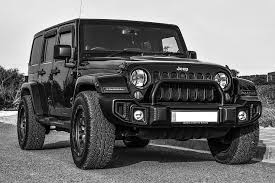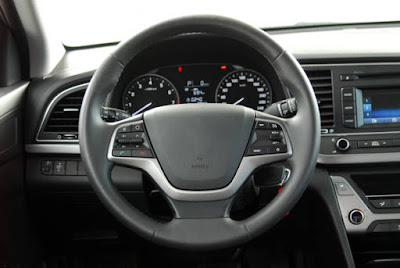What is supercharger and its type and comparison to turbocharger by mechanic adda
vào
09 Apr, 2020
HOW A SUPERCHARGER
WORKS.
By:-MECHANIC adda
A supercharger is just a mechanically driven way to pressurize intake air, thus increasing the density of the air. More air means more fuel, resulting in a more powerful combustion that we recognize as increased horsepower. The supercharger is driven directly by the engine crankshaft, either with a belt, chain, gears, or driveshaft. Thanks to the direct connection, there is a correlation between engine speed and blower speed. As the crankshaft spins, it turns a belt that spins another pulley on the supercharger. That one is connected to the internal rotors inside the case. These compress air and force it into the engine's intake manifold. It might have been a while since high school physics, but compression heats up molecules, so an intercooler is sometimes used to bring temperatures down before the air gets to the intake manifold.
That's the difference between a supercharger and a turbocharger—with a turbocharger system, the forced air induction is driven by exhaust gases. Turbochargers have the advantage of less parasitic drag on the engine, since there's no belt-driven blower mechanism, but they suffer from "turbo lag" before boost kicks in and are less responsive than superchargers at low RPMs.
Driving a supercharged vehicle, you'll notice the power delivery down low in the power band. Since there's no buildup of gasses like a turbo, you get the extra power right now. This gives the impression of a bigger engine with all its instantly available torque. Replacing the factory pulley with a smaller aftermarket unit is a common upgrade. The smaller pulley spins faster, in turn spinning the rotors faster for more boost.
DIFFERENT TYPES OF SUPERCHARGERS
Positive displacement
Usually topped by massive four-barrel carburetors, this type of supercharger looks like a giant transfer case sitting on top of the engine block. This big guy is a Roots blower, the most common aftermarket example of a positive displacement supercharger. The carbs feed the two straight rotors housed in the case. The rotors have two or three lobes that act as scoops to capture air and compress it in the bottom of the case before sending it on to the intake manifold. A roots-style blower is what you would find on Courtney Force's NHRA Funny Car. A similar-looking version is the Eaton style, found on the less racy Pontiac Grand Prix GTP.
Another version of positive displacement is the Lysholm twin-screw supercharger, found on the Ford GT supercar and SVT Lightning pickup. These have two rotors that are helically wound together, like two giant screws. When they rotate, the screws mesh tightly together and compress the air internally for an efficient air charge. Manufacturers say this results in better performance, but they aren't as common due to the complex and expensive design.
While PSIs of boost is the standard measure for turbochargers, superchargers are also designated by their capacity rating. For instance, GMC's 6-71 supercharger can scavenge six cylinders of 71 cubic inches of air each with each revolution. GMC blowers ranging from 6-71 to 16-71 in capacity are pretty common in drag racing and other motorsports.
Centrifugal
If you attend car shows, you've probably seen a Vortech centrifugal supercharger under the hood of a street rod or modern Mustang. These resemble a belt driven turbo, and that is a good analogy. The belt drive spins a multi-vaned compressor wheel within a housing. Inside, a set of gears spins the supercharger faster than the engine, so it acts as a turbo minus the exhaust gas heat and lag. This makes for a popular aftermarket upgrade due to the compact design, quiet operation, and impressive power potential.
Electric
No, not those scammy “electric superchargers" you find on eBay. The $10 versions are just PC cooling fans attached to an intake tube, while the $100 versions are a cheapo boat bilge pump. Either way, you would likely lose power running them in a vehicle, as it's just a blockage causing an air restriction. An actual electric supercharger is a recent development, but it's basically a compressor wheel mated to a 48V electric motor. When you need more engine power, the motor activates the supercharger until no longer needed, then systems like regenerative braking can recharge the system.
THINKING OF ADDING A SUPERCHARGER?
Before you run out and buy a supercharger for your vehicle, you should know a few basics. Supercharger kits are a bit expensive, but as long as your engine is in good shape, it will reliably provide increased power for years. Check your compression to make sure your engine is healthy enough for a blower. If you are running regular gas now, you will most likely be forced to buy premium for higher knock resistance and prevent pinging. You will want to perform a few other upgrades at the same time. Check out a higher-flowing exhaust system—since the supercharger is forcing in more air, you need a way for it all to escape. Also upgrade your plug wires and/or ignition coils, since it will need more power to ignite the extra fuel and air. Some kits play well with the OEM fuel pump, but others will require you to swap out for an upgraded pump. If EFI, you'll also need a new ECU tune.
The biggest things for maintenance are to watch your boost, engine oil, and coolant temps with aftermarket gauges. Then be sure to change your oil on time, and use a high-quality synthetic. Some superchargers use engine oil to lube the blower, while others use a separate oil tank. Either way, be sure to check and maintain your fluids to keep it operating at peak efficiency.
DIFFERENCES BETWEEN SUPERCHARGERS AND TURBOCHARGERS
There is quite a bit of terminology when it comes to automobile parts, and a person can get very easily confused. Some of the things that are bantered about may sound very appealing, but may not be what a car buyer wants in his or her vehicle. Understanding differences between various components helps to make a better decision. Superchargers and turbochargers are mentioned almost in the same breath by many people in the auto industry. There is definitely a difference between the two of them.
 Either one will deal with power. Turbochargers and superchargers are known as forced induction systems. It means that either will compress the air flowing into the engine, which provides more power to the car. This creates a considerable amount of boost, which can be as much as 50% more power into the engine. This makes a luxury car or high-end sports car roar like a lion whenever the owner is tired of the engine purring like a kitten. A main difference between the turbocharger and the supercharger lies in the power supply.
Either one will deal with power. Turbochargers and superchargers are known as forced induction systems. It means that either will compress the air flowing into the engine, which provides more power to the car. This creates a considerable amount of boost, which can be as much as 50% more power into the engine. This makes a luxury car or high-end sports car roar like a lion whenever the owner is tired of the engine purring like a kitten. A main difference between the turbocharger and the supercharger lies in the power supply.
A turbocharger uses the exhaust stream for its energy. The exhaust will run through a turbine that will itself spin the compressor. The turbine spinning can be as much 150,000 RPM (Rotations Per Minute). To put that in layman’s terms, the turbocharger is able to have an RPM speed that can be almost 30 times faster than an ordinary automobile engine. It does take a little while for the turbine to produce the boost, and can result in the car lunging forward when the turbocharger kicks into action. The size of the turbocharger can impact power with a smaller one producing more boost faster. A turbocharger is particularly effective at high altitudes where other engines experience difficulty. Because the air is less dense a normal engine gets a smaller amount of air. Turbocharged engines do not suffer a dramatic reduction in power since the turbocharger is more capable of pumping thinner air.
The source of the power for the supercharger is in a belt connected directly to the engine. A supercharger will compress air of the atmospheric pressure, and create the boost by forcing air into the engine. The supercharger can add as much as 46% more horsepower because the increased air will allow more fuel to be added to the combustion charge. Like the turbocharger, a supercharger will do well in high-altitude.
Looking at the difference between the two the supercharger will take its power from the crankshaft whereas the turbocharger will draw power from exhaust gases that result from combustion. Superchargers will spin with speeds up to 50,000 RPM. The turbocharger is not connected to the engine and can spin much faster. Both will produce large amounts of power. A supercharger doesn’t have a waste gate, which means that smog will emit from a supercharger. Turbochargers on the other hand have smog altering equipment to lower the carbon emission of discharges. Turbochargers will run extremely hot and must be well insulated.
 In deciding on which is better will depend on the vehicle itself. The reason why turbochargers are used most commonly in Europe is because the engines are small and four cylinders are standard. Superchargers can deliver their boost at lower RPMs then a turbocharger, whereas the turbocharger works best at high engine speeds.Turbochargers are quieter and superchargers are more reliable. Superchargers are easier to maintain than the complex turbocharger.
In deciding on which is better will depend on the vehicle itself. The reason why turbochargers are used most commonly in Europe is because the engines are small and four cylinders are standard. Superchargers can deliver their boost at lower RPMs then a turbocharger, whereas the turbocharger works best at high engine speeds.Turbochargers are quieter and superchargers are more reliable. Superchargers are easier to maintain than the complex turbocharger.
The arguments can go on back and forth. It would be great if a supercharger was in the car so that the boost could occur at low RPMs, while a turbocharger would put considerable power at a higher rotation. Volkswagen has attempted that with a twin charger engine. Besides being very expensive, the twin charger engine also only operates with premium gasoline. Determining which is better comes down to the make of the car itself. Incidentally, both are just about the same in price so money is not an issue. A regular car would do better with a supercharger. These are easier to install and tune-ups are not as difficult. The Turbo charger has its real niche in more specialized markets. It is considered more efficient overall than a supercharger. The consumer is left with deciding personally the type of car to own at from that point installing the correct forced induction system to add more power to the drive
Thank you:team mechanic adda
















